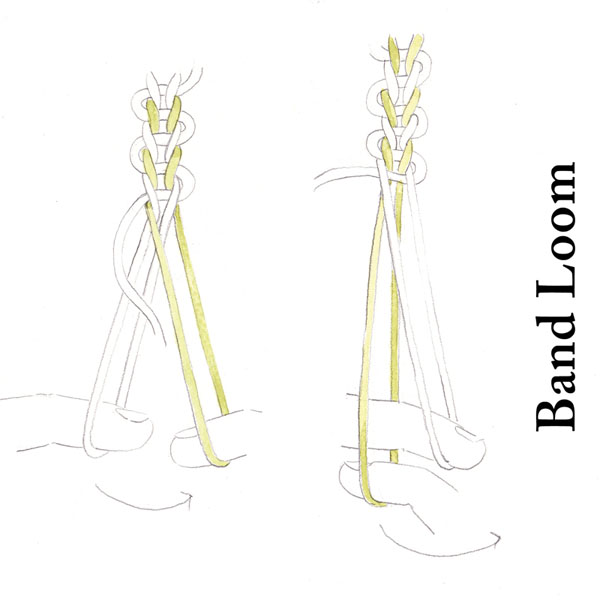Handspinning tools are irresistible. Spindles with enchanting lathe-turned whorls. Niddies with shapely arms to receive your precious yarn. Darling little inch gauges and mesmerizing ball winders. And of course, the wheels themselves—magic in motion. It’s no wonder spinners love to collect the tools of their trade. The fact is, though, that you don’t really need any spinning tool.
Like Elsa in the old Swedish folk tale, you have your ten jolly fingers (not to mention arms, elbows, knees, and toes) to accomplish almost any spinning task you wish. I am an average-height (5’4”) woman. I have slightly short arms for my height and an 8” handspan. Let me show you what that’s good for.
Inch gauge
It’s not always easy to lay hands on a manufactured inch gauge, but you probably have one on your person at all times. Mine lies at the base of my index finger.
Eight-inch rule
That would be my hand, thumb tip to pinky tip. You have no idea how handy this is (no pun). So your hands are larger or smaller? Just find a span that has a convenient length that you can remember.
Two-yard skein
I don’t know what’s magic about two yards, but it just happens I can make one with my hand, radius, ulna, and humerus (funny bone, that would be). Now, your skeleton probably has different dimensions than mine, but so what if your arm makes a two-foot, three-inch skein? Will the skein cops come and get you? Now, the fact that I have this fine built-in device does not make me love my beautiful walnut niddy-noddy less. It just creates a sense of preparedness. Editor’s note: Watch Sarah Anderson make a skein on her arm.
Ball winder, lazy kate, too.
I can hypnotize myself watching my ball winder bob and weave around and around. But I can also use my clever hand to make a fine center-pull ball. And I can use the outer strand and the inner strand from that handy ball to ply—with no leftovers! It is so simple—no wonder spinners have been doing this for millennia. If you’re making a small center-pull ball, wind a small infinity sign around your thumb and index finger. If you’re making a large ball, use your thumb and pinky. Editor’s note: Kate Larson is a master at winding a yarn ball by hand, and she’s happy to show you how.
Thigh spinning
Nope, not an aerobic exercise involving stationary bikes. Simply draw out a length of fiber (long-staple wool is easy) and roll it up your thigh (for Z-twist) or down your thigh (for S-twist) while holding onto one end. This won’t work if you try to do it wearing satin toreador pants—it will just slide around. Twist two strands at the same time, then twist them together in the opposite direction. Voilà! Two-ply yarn! Editor’s note: Judith Mackenzie demonstrates the thigh-spinning technique as she learned it from the Coast Salish people in her video Hand Spindles: A History.
Knitting spool
Girls of a certain age (say, six to ten) use their hands obsessively for this purpose, once shown how. With a nice fuzzy yarn and all four fingers and thumb, you can make a quite credible boa.
Band loom
Well, a really narrow band loom. But it has warps that go up and down, and it makes a shed just like a real loom. No treadles involved, unless you’re the clumsy type and accidentally step on your hand, which is a good reason not to try this while seated on the floor.
I’d be the last person to give up my multiple spinning wheels, or my throng of handspindles, or my bevy of handmade yarn-management tools. Seeking out, collecting, and using them is a joyful part of the craft. But if I were ever locked up in a padded cell or stranded on a desert island, just give me some fiber. I’d be good to go.
—Linda Ligon
Linda Ligon learned to spin in 1970, long before she became the editorial director of Spin Off and took on all the other roles she has played in between.
Originally published in Spin Off Summer 2009. All illustrations by Ann Sabin Swanson





